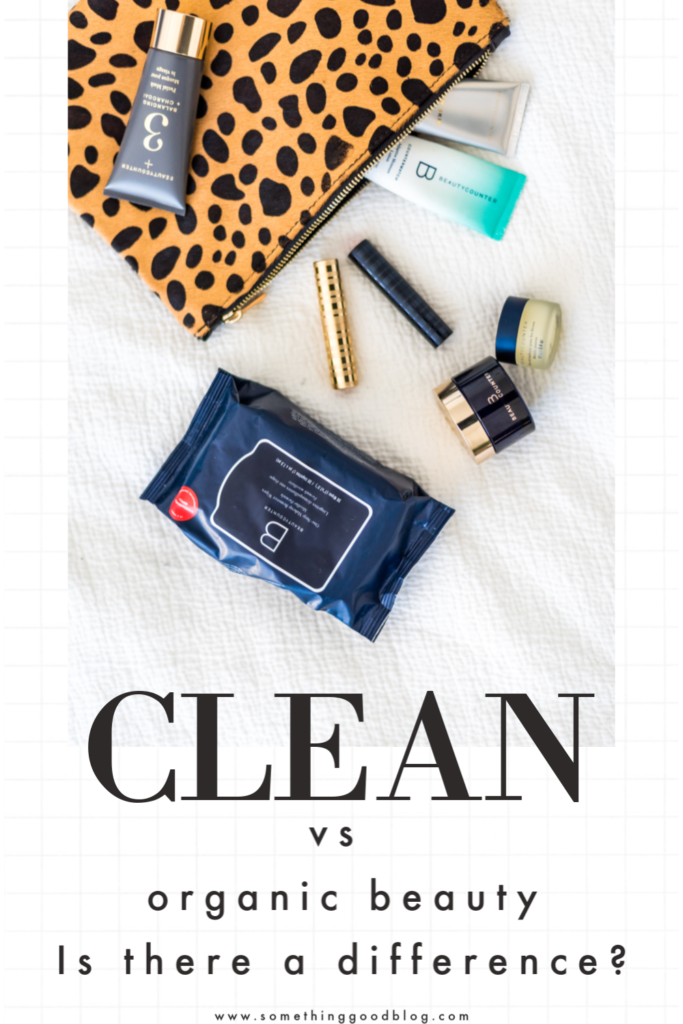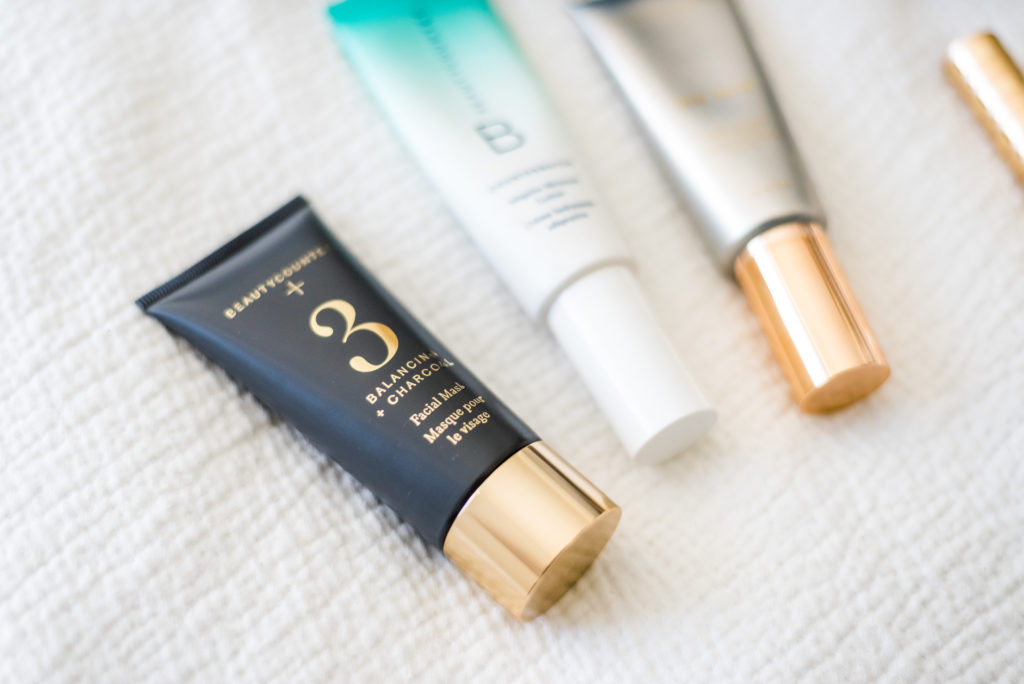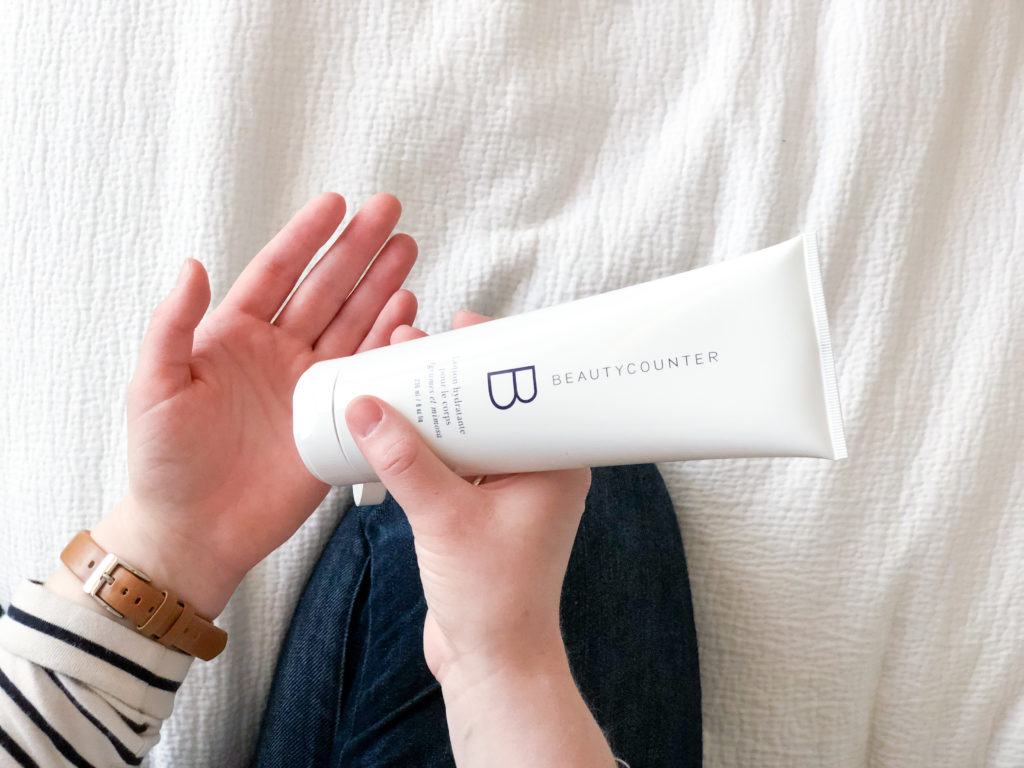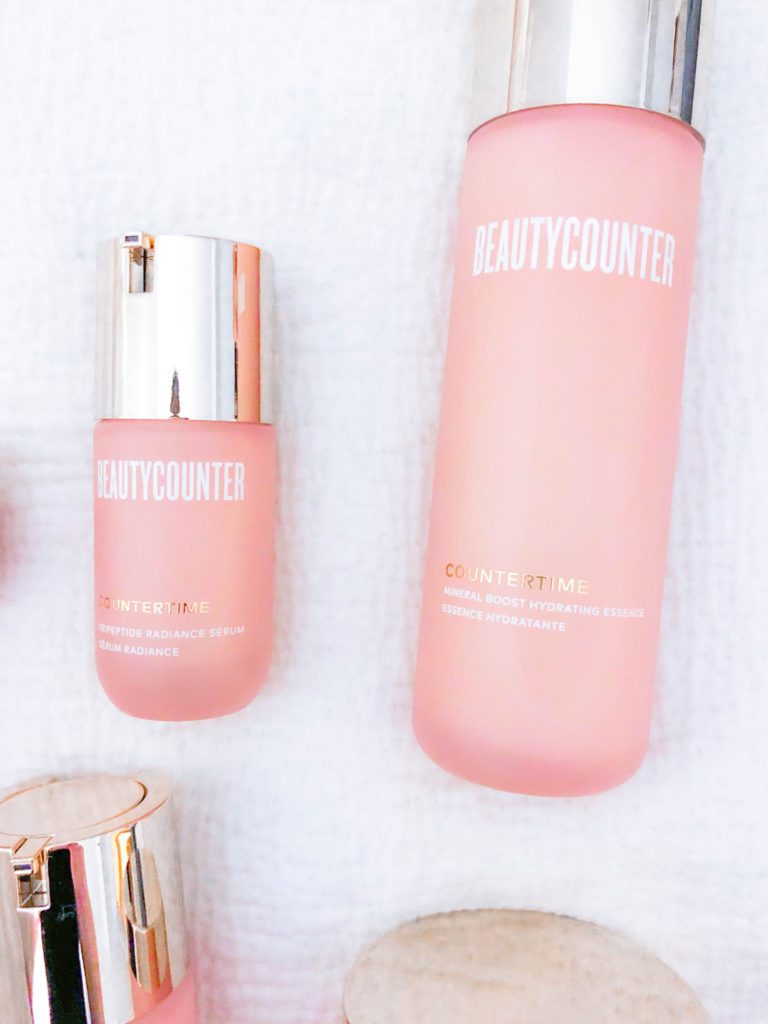Note: Today’s post contains affiliate links. Thank you for supporting the brands that support Something Good.
Seriously, is there a difference between clean, natural, and organic beauty products? And does anyone really know what it is?
So many terms are getting thrown around in the beauty world these days. Clean, organic, green, natural, non-toxic, yada, shadawhoop (okay, I made that last one up). But at the end of the day, do we really know what any of these mean? Is there a difference between them? I really wanted to know so I figured you might want to know too.
So I thought I would put together a post that breaks down the differences between each of these words. That way next time you buy a product, you’ll have a better idea of what you’re really getting into. You’ll also know how safe for you it really is.

The Differences Between Natural, Sustainable, Organic, and Clean Beauty
Natural Beauty
This means it contains ingredients derived directly from plants, animals, or minerals with “minimal” to no processing. However, this isn’t regulated, so that kind of gives the word “natural” a pretty wide range. Also, ingredients can still end up being pretty processed since most ingredients are rarely used as they appear in nature. Really, anyone can use this word because no one regulates it in any form (even for food).
Really, anyone can use this word because no one regulates it in any form (even for food).
Green or Sustainable
The products are created/developed with minimal present and future environmental impact. This could be anything from what’s in the actual product to the product’s packaging or how it’s distributed. A Green Good Housekeeping Seal can be a good way to check to see if it’s in this category.

Organic Beauty
This means that the cosmetic products are made using organically farmed ingredients. Aka ingredients that are grown without GMOs, herbicides, synthetic fertilizers, etc.
But don’t get too excited. the term organic may be used for a product even if it contains just 1% organic ingredients. (Though this regulation varies from state to state). However, the product can not be labeled CERTIFIED organic (which I’ll get into in a second). I should note, “organic” is the only government regulated term right now in the beauty space, but ONLY because of the two terms below.
USDA or NSF Certified Organic
USDA-Certified Organic takes it a step further. It say the product must contain at least 95% organically cultivated ingredients. While NSF Certified Organic requires at least 70% organic ingredients. What does this mean? No animal testing, GM, controversial chemicals, parabens and phthalates, no synthetic colors, dyes or fragrances, and no nano particles for a certain percentage of the ingredients.
Here’s the weirdest kicker: for NSF Certified Organic, you aren’t actually certifying the product organic, but the ingredients in the product organic. Why? Well, 5% to 30% of that product that doesn’t have organic ingredients in them.

Synthetic- Free
I felt like I should include this one because it pops up every once in a while. Synthetic-free means that a product contains no-man made ingredients. So you would think that just means it’s organic, right? Wrong! Synthetic-free means any naturally occurring element or compound, but it doesn’t have to be plant-based. So a product can be synthetic-free and not organic, or organic and not synthetic free. The two are not interchangeable.

Clean Beauty
I feel like we’ve finally reached the main event. Now that we’ve gone over everything above, I can finally explain what clean beauty ACTUALLY is. Clean beauty products are made from ingredients that have been tested and proven to be nontoxic and safe.
The US hasn’t passed a major federal law governing the cosmetics industry since 1938. Because of this, the brands who sell clean beauty products have taken it upon themselves to set their own standards for what ingredients are safe and non-toxic for consumers to use. These brands often choose to leave out ingredients often used in the cosmetics industry. This includes ingredients like phthalates, parabens, triclosan, and oxybenzone, which have been found to be harmful to the users. In fact, some beauty brands, like Beautycounter, have taken it upon themselves to ban the use of over 1,500 different harmful ingredients from their products. (As a reference point, the EU bans 1,400 chemicals, while the US only bans 30.)
How is clean beauty different from organic then?
How is it different from organic or synthetic-free? Well, clean beauty doesn’t rule out the use of synthetic materials or all chemicals. Why? Products don’t have to be completely from a plant to be safe for you! That’s just a marketing scheme! Synthetic materials can be good in products as long as they’ve been proven safe and don’t harm the consumer or environment. So your clean beauty products may contain synthetic materials.
Wow, that was a lot and I hope it wasn’t too much! It’s an overwhelming topic that isn’t helped by the lack of official definitions. Plus, companies have been confusing us all for years with their marketing schemes and greenwashed (incorrect) definitions. But I hope that this clears things up for you. I also hope it explains a little bit more why I’ve been exploring clean beauty lately.
Let me know if you have any questions! Also, don’t forget to subscribe to my newsletter where we dive even more into beauty questions and favorite beauty sale!





Comments
Comments are closed